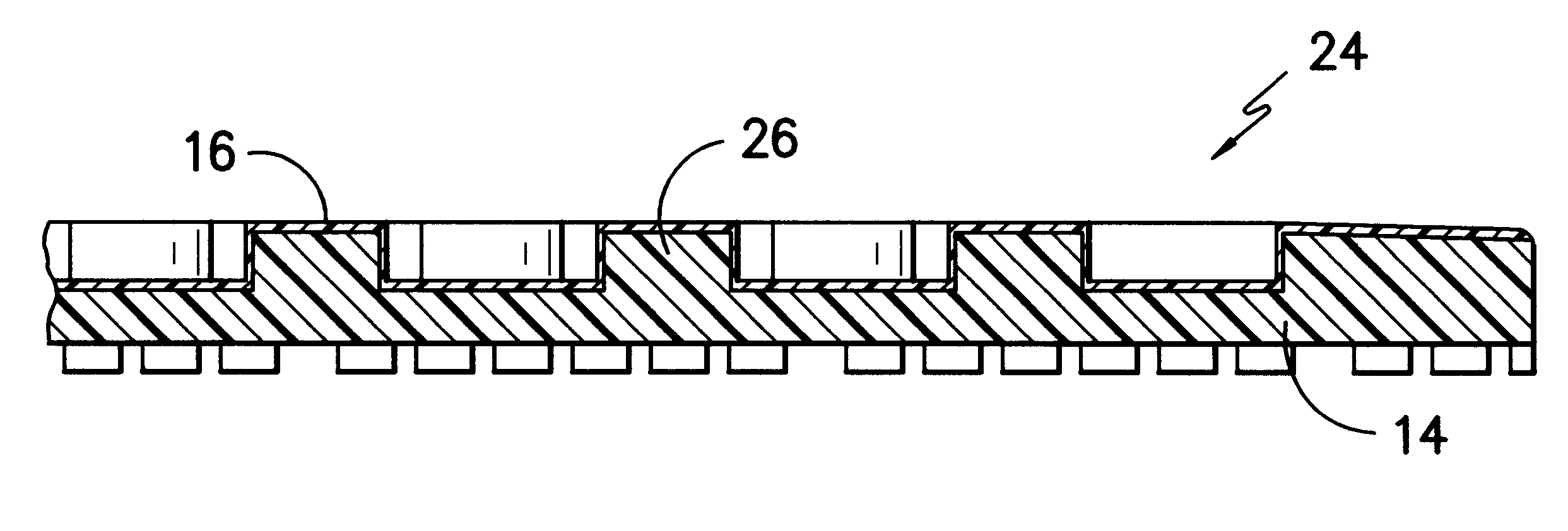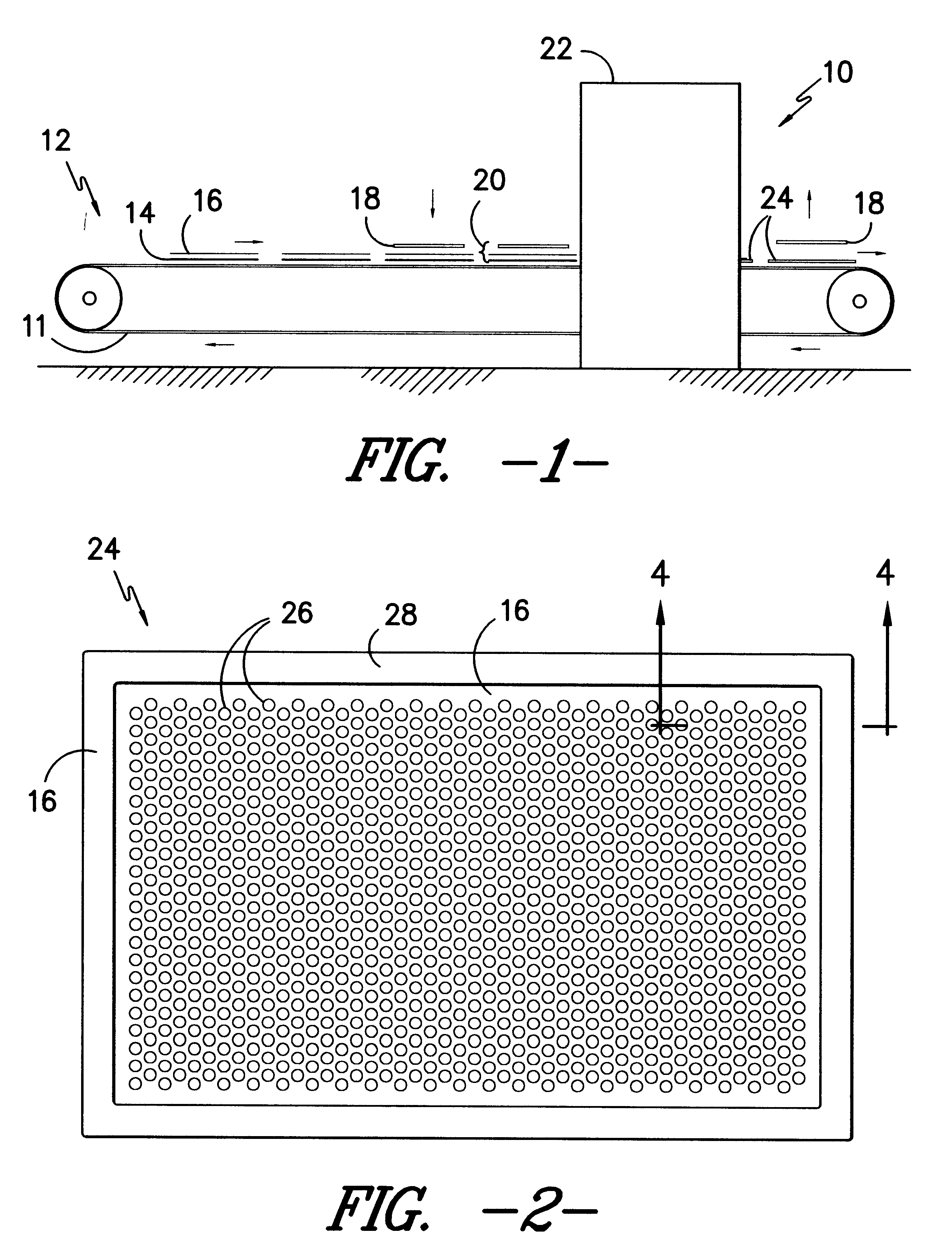Flashless rubber floor mat and method
a technology of floor mats and cushioned pads, which is applied in the direction of carpet cleaners, cleaning machines, sofas, etc., can solve the problems of unneeded and potentially floor staining or dirtying articles that need to be removed, the mats are generally not able to be washed in industrial cleaning, and it is difficult to produce uncarpeted cushioned floor mats. to achieve the effect of providing additional stability
- Summary
- Abstract
- Description
- Claims
- Application Information
AI Technical Summary
Benefits of technology
Problems solved by technology
Method used
Image
Examples
example ii
Two separate rubber sheet materials are produced by fluxing together the materials as set forth in Table 1A in a standard rubber internal mixer at a temperature of about 280.degree. F. to 300.degree. F. for a period of one to two minutes. EPDM additions are made as shown in Table 1A to yield a ratio of EPDM to NBR of 3.0. Additions of curative agents as provided in Table 1B are then made for two separate rubber sheets, however, the second does not include the blowing agent. The first sheet, including the blowing agent, being an uncured sheet of the fluxed rubber compounds is then calendared to a thickness of about 40 mils, having a width of approximately 4 feet and a length of approximately 6 feet. The second sheet, also being uncured, is then calendared to a thickness of about 5 mils and having the same dimension as the first sheet. The first sheet is then placed on a silicon mold or belt (to form cleats in the ultimate floor mat) and covered entirely on its surface with the second...
example iii
Three separate rubber sheet materials are produced by fluxing together the materials as set forth in Table 1A in a standard rubber internal mixer at a temperature of about 280.degree. F. to 300.degree. F. for a period of one to two minutes. EPDM additions are made as shown in Table 1A to yield a ratio of EPDM to NBR of 3.0. Additions of curative agents as provided in Table 1B are then made for three separate rubber sheets, however, the second and third do not include the blowing agent. The first sheet, including the blowing agent, being an uncured sheet of the fluxed rubber compounds is then calendared to a thickness of about 60 mils, having a width of approximately 3 feet and a length of approximately 4 and-a-half feet. The second and third sheets, also being uncured, are then calendared to a thickness of about 10 mils and having the same dimension as the first sheet. The third sheet is then placed on a mold or belt (to form cleats in the bottom of the ultimate floor mat) and cover...
PUM
| Property | Measurement | Unit |
|---|---|---|
| thickness | aaaaa | aaaaa |
| thickness | aaaaa | aaaaa |
| thickness | aaaaa | aaaaa |
Abstract
Description
Claims
Application Information
 Login to View More
Login to View More - R&D
- Intellectual Property
- Life Sciences
- Materials
- Tech Scout
- Unparalleled Data Quality
- Higher Quality Content
- 60% Fewer Hallucinations
Browse by: Latest US Patents, China's latest patents, Technical Efficacy Thesaurus, Application Domain, Technology Topic, Popular Technical Reports.
© 2025 PatSnap. All rights reserved.Legal|Privacy policy|Modern Slavery Act Transparency Statement|Sitemap|About US| Contact US: help@patsnap.com



